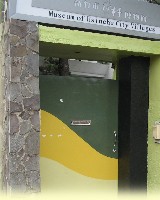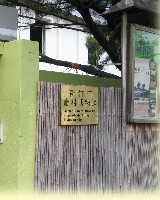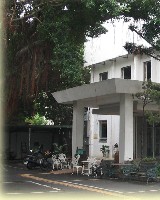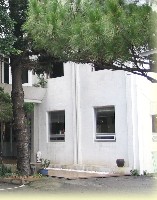 |
 |
 |
 |
| |
| ¡§ The Establishment of Hsinchu Museum of Military Dependents Village offers an opportunity to reserve and display the culture of military dependents village. This is just a beginning. With everyone's combined effort, we can make the history, culture and relics of military dependents village everlasting.¡¨ |
~~Mr. Lin, Jung-Tzer, Major of Hsinchu City |
|
|
|
| |
|
The timing of Hsinchu military dependents village formation was closely related with the military movement. There are three phases of military dependents village formation listed below: |
The First Phase: the civic war began right after the victory of the war of resistance against Japanese aggression; before our military troops still not yet retreated to Taiwan . The army and dependents were sited at Keelong and Hsinchu, such as Dongkuang Village and Nanya Village . |
The Second Phase: after government changeover in China , our military troops moved to Taiwan around the end of 1948.In the end of 1948 to 1949 later, Hsinchu military dependents villages mostly belong to this category. Most of their neighbors were the co-workers in the same units or troops. |
The Third Phase: Women's Association funded and established military dependents villages in 60's and 70's, such as Gungshiue Village for the army, Trade Eight Village, and 22 nd village for the air force, etc. Those villages were based on the military type but troop. |
|
Hsinchu military dependents villages belong to the air force, army, united military headquarters and Taiwan military control department. Air force controls the most, followed by the army. Air force 499 troop controls air force one~22 villages, Chuhua village, Laushan village, Tadau village, Chunjen village, etc, totaling 26 villages. Army 206 troop controls Lukuang village, Chunshing village, Jihshing village, Guofang village, Shingan village, Nanya village, Kingcheng village, Jingjiun village, Trade Second village, Trade Eighth village, South Jingchun village, North Jingchun village, Dongkuang village, Chrtuchi village, Wenjieu village, Gungshiue village, totaling 17 villages. United military headquarters manages Szjr village, North Chrtuchi village. Military control department manages Jingshin village. |
|
There were 46 villages in Hsinchu originally. With renewal of military dependents villages, many precious historical relics are disappearing. The reservation of the culture of military dependents village demands immediate attention. Hsinchu Museum of Military Dependents Village is the first museum in Taiwan that is themed with the culture and relics of military dependents village. It was born under the passionate support of two former presidents of Hsinchu ¡§Chingtien Self-Improvement Association¡¨, major of Hsinchu, Tsai, Ren-Jian and existing major, Lin, Jung-Tzer. All the relics and materials in the museum were donated by the military dependents fellows; each piece contains of the unique memory of village. There are also many stories and histories dictated by the seniors at the villages. The main purpose is to reserve the culture of military dependents villages and make the next generation of village understand their immigration history and Taiwan experience. |
| |
|
| |
| Source¡GHsinchu Museum of Military Dependents Village |
|
 |
|










